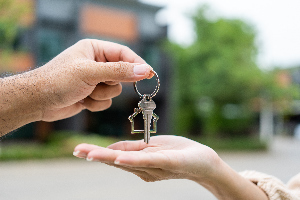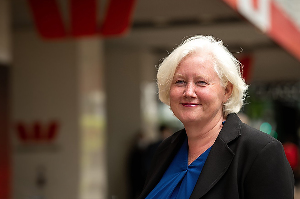
In its most recent Property Focus report, ANZ has trimmed its prediction of house price growth from 2.5% to zero, “given soft near-term price momentum”.
Meanwhile, Cotality chief property economist Kelvin Davidson says lower mortgage rates, steady income growth and a decline in property values have contributed to national house values sitting about 7.5 times household incomes in the second quarter, the lowest level since mid-2019.
Mortgage repayments now absorb about 44% of median household income, compared with a peak of 57% in 2022. “That takes servicing costs back to their lowest level in more than four years and only marginally above their long-run average of 43%,” Davidson says.
Servicing costs at or near their long-term average suggest that affordability is no longer the handbrake it was during the downturn.
“That doesn’t mean housing is suddenly cheap, but it does mean buyers and existing borrowers are operating in conditions that are much more manageable than they were a few years ago.”
Affordability gains have been most visible in Auckland, Tauranga and Wellington, where mortgage repayments are now sitting slightly below their long-term norms, a notable turnaround from conditions only 18 months ago.
Tauranga remains the least affordable of the main centres in absolute terms, with house values sitting about 8.5 times household incomes.
Davidson says while the figure remains relatively high, it is a significant improvement from the peak of nearly 12 in late 2021.
Auckland’s conditions have also improved, with a value-to-income ratio of 7.9 the lowest level in a decade, while Wellington sits at 6.4, back in line with its long-run average for the first time since 2016.
“Wellington is not suddenly a cheap market, but it is more affordable than it has been for many years,” he says.
“The fact that key measures are now back at long-term norms in a number of key centres is a clear sign of how far conditions have adjusted and helps to explain the renewed interest we are seeing from some buyer groups.”
Growth recovery expected next year
ANZ says it expects the RBNZ to keep downward pressure on mortgage interest rates by reducing the OCR from 3% to 2.5% by the end of the year.
"This will support a gradual recovery in the housing market and the wider economy, and we continue to expect 5% house price growth in 2026," it says.
"There is a chance the Reserve Bank's easing stance triggers a quick lift in sentiment in the housing market, but we expect the shift in sentiment will be gradual given lingering headwinds from a soft job market and high inventories of property for sale," the bank’s economists say.
"We also expect house price growth will be tempered by expectations that interest rates will eventually lift back up from low levels."
The bank isn’t expecting lower interest rates to stick around for the longer term and says buyers are likely to factor this in. It can also be seen in the fact five-year mortgage rates have dropped by much less than shorter-term rates.
Buyers also need to factor in the cost of increasing council rates and insurance, it says.
"This will collectively temper buyers' enthusiasm and the willingness of existing owners to hold on to property, even with a lower OCR.”




Comments
No comments yet.
Sign In to add your comment